Transformer Maintenance Guide: Step-by-Step Procedures, Oil Testing & Safety Checks (2025)
Are you risking unexpected downtime and costly repairs due to neglected transformer maintenance? Many facilities overlook crucial checks, leading to preventable failures. But how can you ensure your transformers remain reliable and efficient?
Key Answer: Transformer maintenance prevents 75% of failures by following 4 key steps: (1) Monthly visual inspections, (2) Annual electrical tests (IR/TTR), (3) Oil sampling (DGA/BDV), and (4) Cooling system checks. These procedures ensure early detection of issues, extend equipment life, and maintain optimal performance.

In this comprehensive guide, I’ll walk you through essential transformer maintenance procedures, from basic visual inspections to advanced oil analysis techniques. Whether you’re a facility manager, an electrical engineer, or a maintenance technician, this article will provide you with practical insights to keep your transformers running smoothly and prevent costly breakdowns.
Why Regular Transformer Maintenance Is Essential?
Have you ever calculated the cost of a sudden transformer failure? The expenses go far beyond just repairs. But why exactly is regular maintenance so crucial, and what risks are you taking by neglecting it?
Regular transformer maintenance is essential because it significantly reduces the risk of unexpected failures, extends equipment lifespan, and ensures optimal performance. Proper maintenance can prevent up to 75% of transformer failures, saving millions in potential downtime and replacement costs. It helps identify early signs of insulation degradation, oil contamination, and mechanical issues before they lead to catastrophic breakdowns. Regular checks ensure compliance with safety standards, optimize efficiency, and provide valuable data for predictive maintenance strategies.
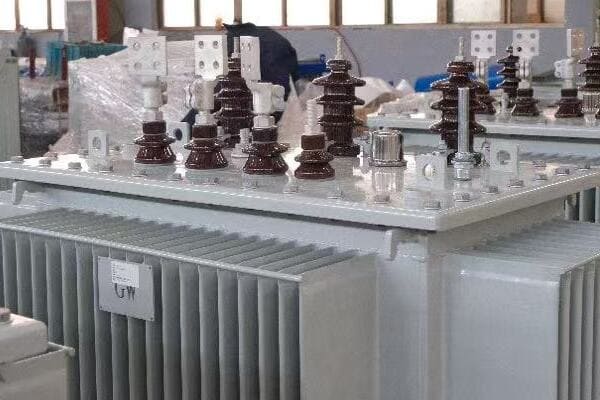
Key Aspects of Regular Transformer Maintenance
Let’s explore the main reasons why consistent maintenance is crucial:
- Failure Prevention and Reliability
- Cost Savings and Extended Lifespan
- Safety and Regulatory Compliance
- Performance Optimization
- Data Collection for Predictive Maintenance
Failure Prevention and Reliability
Catching issues before they escalate:
- Early detection of insulation degradation
- Identification of oil contamination or moisture ingress
- Monitoring of mechanical wear and tear
I recently consulted on a project where routine maintenance revealed early signs of partial discharge in a critical transformer. By addressing this issue promptly, we prevented a potential failure that could have resulted in weeks of downtime for the entire facility.
Cost Savings and Extended Lifespan
Maximizing investment and reducing long-term costs:
- Prevention of major repairs through timely minor interventions
- Extension of transformer lifespan beyond initial design expectations
- Reduction in energy losses through maintained efficiency
During a recent audit of a manufacturing plant’s maintenance records, we found that transformers under regular maintenance had an average lifespan 30% longer than those with sporadic upkeep. The cost savings in delayed replacements alone justified the maintenance program many times over.
Safety and Regulatory Compliance
Ensuring safe operation and meeting standards:
- Regular checks to prevent oil leaks and potential environmental hazards
- Compliance with industry standards (e.g., IEEE, IEC) and local regulations
- Minimization of fire and explosion risks through proactive maintenance
Here’s a quick overview of how maintenance impacts safety and compliance:
| Maintenance Aspect | Safety Impact | Compliance Benefit |
|---|---|---|
| Oil Testing | Prevents oil degradation and potential fires | Meets environmental safety standards |
| Electrical Testing | Identifies insulation weaknesses | Ensures operational safety standards |
| Visual Inspections | Detects external damage or leaks | Complies with regular inspection requirements |
| Cooling System Checks | Prevents overheating | Maintains operational efficiency standards |
Performance Optimization
Keeping transformers at peak efficiency:
- Maintaining optimal oil quality for effective cooling and insulation
- Ensuring proper electrical characteristics (e.g., turns ratio, winding resistance)
- Optimizing cooling system performance for various load conditions
Data Collection for Predictive Maintenance
Building a foundation for advanced maintenance strategies:
- Trend analysis of oil test results over time
- Tracking of electrical parameters to predict potential issues
- Integration with smart monitoring systems for real-time health assessment
In my experience, the value of regular maintenance often becomes most apparent in crisis situations that are narrowly averted. I recall a case where a utility company implemented a rigorous maintenance program for their substation transformers. Two years later, during a severe heat wave that strained the grid to its limits, their transformers performed flawlessly while several poorly maintained units in neighboring areas failed. This resilience not only prevented widespread outages but also saved the company millions in potential damages and regulatory fines.
As we move on to discuss specific maintenance procedures, remember that each check and test is a crucial part of a larger strategy to ensure the reliability, safety, and longevity of your transformer assets.
Routine Visual Inspections: What to Look for and How Often?
Have you ever walked past a transformer and wondered if everything was in order? Visual inspections are your first line of defense against potential issues. But what exactly should you be looking for, and how often should these checks be performed?
Routine visual inspections of transformers should focus on checking for oil leaks, examining bushings for cracks or contamination, verifying proper oil levels, inspecting the tank for corrosion or damage, and ensuring cooling fins are clean and undamaged. Key areas to inspect include high-voltage and low-voltage bushings, radiators, valves, gauges, and the overall transformer enclosure. These inspections should be conducted monthly for critical transformers and at least quarterly for others. After severe weather events, additional checks are recommended.
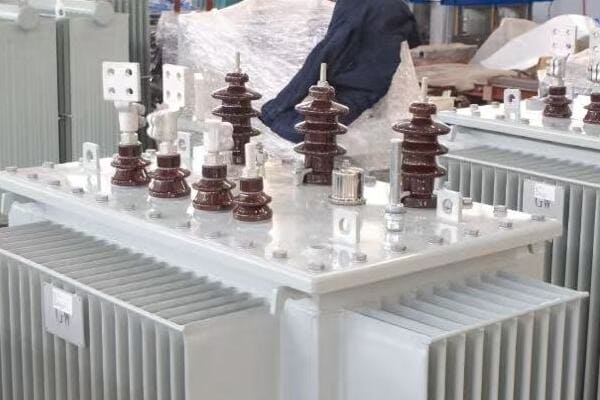
Key Elements of Routine Visual Inspections
Let’s break down the main components of a thorough visual inspection:
- Oil Leak Detection
- Bushing and Insulator Inspection
- Oil Level Checks
- Tank and Radiator Examination
- Gauge and Indicator Verification
Oil Leak Detection
Identifying potential oil loss:
- Check for oil stains or wetness around seams, valves, and fittings
- Inspect the ground beneath the transformer for oil puddles
- Verify integrity of gaskets and seals
I recently conducted a training session where we used UV dye in a demo transformer to show how even small leaks can be detected. This hands-on experience significantly improved the team’s ability to spot subtle signs of oil leakage during routine inspections.
Bushing and Insulator Inspection
Ensuring insulation integrity:
- Look for cracks, chips, or contamination on bushing surfaces
- Check for signs of tracking or arcing
- Verify proper alignment and secure mounting
During a recent substation audit, we discovered hairline cracks in several transformer bushings using a high-powered spotlight during dawn inspections. This early detection prevented potential flashovers and allowed for scheduled replacements without any unplanned outages.
Oil Level Checks
Maintaining proper insulation and cooling:
- Verify oil levels in main tank and conservator (if present)
- Check for sudden changes in oil level
- Ensure oil level gauges are functioning correctly
Here’s a quick checklist for oil level inspection:
| Component | What to Check | Action if Issue Found |
|---|---|---|
| Main Tank | Oil level within normal range | Investigate cause, top up if necessary |
| Conservator | Oil level matches ambient temperature | Check for leaks, adjust if needed |
| Gauges | Functioning correctly, no sticking | Repair or replace faulty gauges |
Tank and Radiator Examination
Assessing structural and cooling integrity:
- Inspect for rust, dents, or paint damage on the tank
- Check radiator fins for blockages or damage
- Verify fan operation in forced-air cooling systems
Gauge and Indicator Verification
Ensuring monitoring system functionality:
- Check oil temperature gauges for proper operation
- Verify pressure relief devices are unobstructed
- Ensure all indicators (e.g., oil level, pressure) are within normal ranges
For example, during a recent inspection at a wind farm substation, we noticed unusual vibration in one of the transformer cooling fans. This observation led to the discovery of a bearing issue that, if left unchecked, could have caused the cooling system to fail during peak summer loads. By addressing this seemingly minor issue promptly, we prevented potential overheating and extended the transformer’s operational life.
Electrical Testing Procedures: IR, TTR, Winding Resistance?
Are you confident that your transformer’s internal components are in good condition? While visual inspections are crucial, they can’t reveal everything. This is where electrical testing comes in. But what tests should you be performing, and what can they tell you about your transformer’s health?
Standard transformer testing procedures include insulation resistance tests (IR tests) to assess overall insulation condition, turns ratio tests (TTR) to verify voltage transformation, and winding resistance measurements to detect connection issues. These tests, typically performed annually or during commissioning, are essential for detecting internal faults, assessing insulation health, and ensuring the transformer is functioning as designed. Regular electrical testing is crucial for maintaining transformer reliability and preventing unexpected failures.
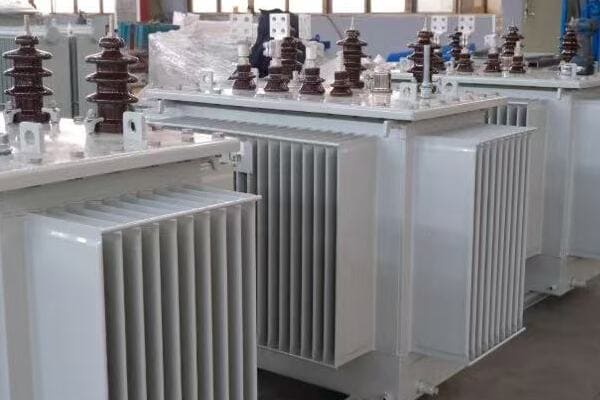
Key Aspects of Transformer Electrical Testing
Let’s explore the main electrical tests and their significance:
- Insulation Resistance (IR) Testing
- Turns Ratio Testing (TTR)
- Winding Resistance Measurement
- Power Factor Testing
- Interpreting Electrical Test Results
Insulation Resistance (IR) Testing
The IR test is your transformer’s ‘immune system check’. By applying 500-5000V DC between windings:
- Healthy Transformer: Resistance >1000 MΩ (per IEEE 43)
- Warning Sign: <100 MΩ indicates moisture or contamination
Pro Tip: Test at consistent temperature (resistance drops 50% per 10°C rise).
I recently led a testing program where IR measurements revealed an unexpected decrease in insulation resistance in a critical transformer. Further investigation uncovered a small oil leak that was allowing moisture ingress. Early detection allowed us to address the issue before it led to a major failure.
Turns Ratio Testing (TTR)
Verifying transformer design and detecting winding issues:
- Confirms correct voltage transformation ratio
- Detects shorted turns or improper tap settings
- Essential for ensuring transformer operates as designed
During a recent commissioning test, we discovered a slight discrepancy in the turns ratio of a new transformer. This led to the identification of a manufacturing defect that, if left undetected, could have caused operational issues and reduced efficiency.
Winding Resistance Measurement
Detecting connection and winding problems:
- Identifies loose connections, broken strands, or high-resistance joints
- Helps locate potential hot spots in windings
- Crucial for preventing winding failures and ensuring efficient operation
Here’s a quick guide for interpreting winding resistance test results:
| Test Result | Possible Indication | Recommended Action |
|---|---|---|
| Within ±0.5% of factory test | Normal condition | No action needed |
| 0.5% – 2% deviation | Minor issues developing | Schedule for closer monitoring |
| >2% deviation | Significant problem | Immediate investigation required |
Power Factor Testing
Assessing overall insulation quality:
- Measures dielectric losses in insulation system
- Indicates presence of contamination or moisture
- Crucial for evaluating the aging of insulation materials
Interpreting Electrical Test Results
Turning data into actionable insights:
- Comparing results to baseline measurements and industry standards
- Correlating different test results for comprehensive health assessment
- Developing maintenance strategies based on test outcomes
For example, in a recent project involving the commissioning of a new wind farm substation, we conducted thorough electrical tests on all transformers before energization. During these tests, we identified a transformer with marginally low insulation resistance. Although the values were still within acceptable limits, they were lower than expected for a new unit. This led to a detailed inspection which revealed a minor manufacturing defect in the bushing seals. By addressing this issue before putting the transformer into service, we likely prevented premature failure and ensured the long-term reliability of the wind farm’s power infrastructure.
Transformer Oil Sampling and Analysis?
Have you ever wondered what secrets transformer oil holds about the health of your equipment? Oil sampling and analysis is like a blood test for your transformer, revealing critical information about its condition. But what exactly should you be testing for, and how often?
Transformer oil sampling and analysis is crucial for assessing equipment health and predicting potential failures. Key tests include dielectric breakdown voltage (BDV) to measure insulation strength, moisture content analysis to detect contamination, acidity testing to check for oil degradation, and dissolved gas analysis (DGA) to identify internal faults. Regular oil testing, typically conducted semi-annually or quarterly for critical units, can detect issues like insulation breakdown, overheating, and arcing before they lead to failures.
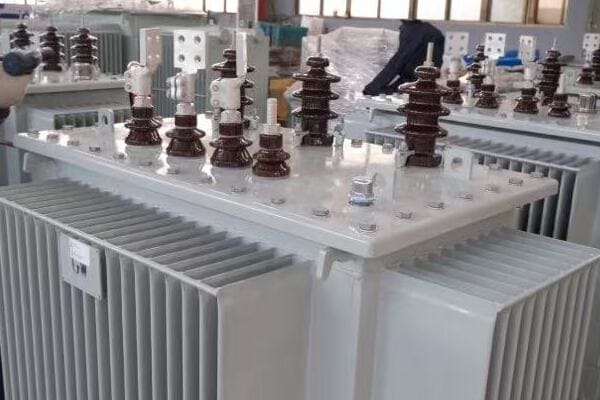
Key Aspects of Transformer Oil Sampling and Analysis
Let’s explore the main components of a comprehensive oil testing program:
- Sampling Procedures and Frequency
- Dielectric Breakdown Voltage (BDV) Testing
- Moisture Content Analysis
- Acidity Testing
- Dissolved Gas Analysis (DGA)
Sampling Procedures and Frequency
Ensuring accurate and representative samples:
- Proper sampling locations (e.g., main tank, OLTC compartment)
- Use of clean, dry sampling equipment
- Frequency recommendations based on transformer criticality and operating conditions
I recently conducted a workshop on proper oil sampling techniques. We demonstrated how improper sampling can lead to misleading results, emphasizing the importance of following standardized procedures for reliable analysis.
Dielectric Breakdown Voltage (BDV) Testing
Assessing insulation strength:
- Measures the oil’s ability to withstand electrical stress
- Indicates presence of contaminants or moisture
- Critical for preventing insulation failures
During a recent routine testing program, we discovered a gradual decline in BDV across several transformers in a substation. This led to a targeted oil reconditioning program, significantly reducing the risk of insulation breakdown.
Moisture Content Analysis
Detecting harmful contamination:
- Measures water content in parts per million (ppm)
- Indicates potential for reduced insulation efficiency and accelerated aging
- Crucial for preventing formation of bubbles under high-temperature conditions
Acidity Testing
Checking for oil degradation:
- Measures acid content, typically in mg KOH/g
- Indicates level of oil oxidation and potential for corrosion
- Essential for determining need for oil replacement or reconditioning
Dissolved Gas Analysis (DGA)
Dissolved Gas Analysis (DGA) acts as a ‘health checkup’ for your transformer. When internal faults occur (like overheating at 150°C+), it produces warning gases:
- Hydrogen (H₂): Early sign of partial discharge
- Ethylene (C₂H₄): Indicates overheating >700°C
Here’s a quick reference guide for interpreting oil test results:
| Test | Normal Range | Danger Threshold |
|---|---|---|
| BDV | >40 kV | <30 kV [需换油] |
| Moisture | <20 ppm | >30 ppm |
| Acidity | <0.1 mg KOH/g | >0.2 mg KOH/g |
In my experience, regular oil testing has been instrumental in preventing catastrophic failures. I recall a case where routine DGA revealed rapidly increasing levels of acetylene in a critical substation transformer. This early warning sign of internal arcing allowed us to take the transformer offline for inspection and repair, averting a potential explosion that could have caused millions in damages and endangered lives.
Cooling System and Breather Maintenance?
Have you ever considered how crucial the cooling system is to your transformer’s performance and longevity? Or how a small component like the breather can impact your transformer’s overall health? These often-overlooked aspects play a vital role in transformer maintenance. But what exactly should you be checking, and why are these systems so important?
Cooling system and breather maintenance are essential for ensuring transformer efficiency and preventing moisture ingress. Key checks include inspecting radiator fins for blockages, verifying proper operation of cooling fans and pumps, checking oil levels in the conservator tank, and examining the silica gel in the breather for color changes. Regular inspections, typically monthly for cooling systems and quarterly for breathers, ensure optimal heat dissipation and prevent moisture contamination. Proper maintenance of these systems is crucial for extending transformer life, maintaining efficiency, and preventing insulation degradation due to overheating or moisture.
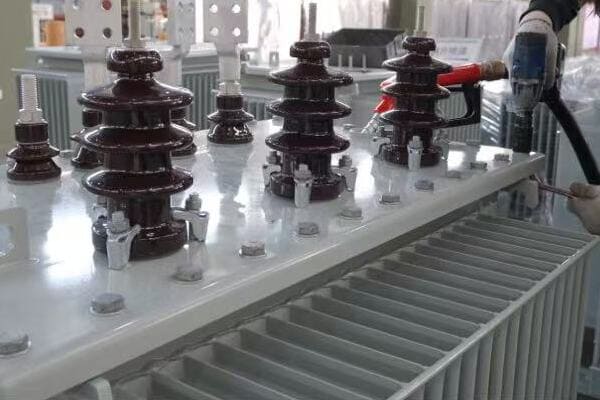
Key Aspects of Cooling System and Breather Maintenance
Let’s explore### Key Aspects of Cooling System and Breather Maintenance
Let’s explore the main components and checks for these critical systems:
- Radiator and Fin Inspection
- Cooling Fan and Pump Verification
- Oil Level and Circulation Checks
- Breather System Examination
- Temperature Monitoring and Control Systems
Radiator and Fin Inspection
Ensuring effective heat dissipation:
- Check for blockages, damage, or corrosion on radiator fins
- Verify proper oil flow through radiators
- Ensure adequate airflow around the transformer
I recently conducted a thermal imaging survey of a substation where we identified a transformer with uneven heat distribution across its radiators. Further investigation revealed partial blockage in several cooling fins, which, once cleaned, significantly improved the transformer’s cooling efficiency and reduced its operating temperature.
Cooling Fan and Pump Verification
Maintaining active cooling performance:
- Test operation of cooling fans for unusual noise or vibration
- Verify proper functioning of oil pumps in forced-oil systems
- Check control systems for correct activation based on temperature
During a recent maintenance overhaul, we discovered that several cooling fans on a large power transformer were operating at reduced speed due to worn bearings. Replacing these fans led to a noticeable improvement in cooling efficiency and reduced the transformer’s average operating temperature by several degrees.
Oil Level and Circulation Checks
Ensuring proper cooling medium:
- Verify oil levels in the main tank and conservator
- Check for proper oil circulation in forced-oil cooling systems
- Inspect for any signs of oil leakage or contamination
Here’s a quick checklist for cooling system maintenance:
| Component | What to Check | Frequency | Action if Issue Found |
|---|---|---|---|
| Radiator Fins | Cleanliness, damage | Monthly | Clean or repair as needed |
| Cooling Fans | Operation, noise | Monthly | Repair or replace faulty units |
| Oil Pumps | Proper circulation | Monthly | Service or replace if malfunctioning |
| Oil Levels | Correct level in gauges | Weekly | Top up oil or investigate leaks |
Breather System Examination
Preventing moisture ingress:
- Check color of silica gel in dehydrating breathers
- Verify proper operation of air intake valves
- Inspect oil in the breather oil cup for contamination
Temperature Monitoring and Control Systems
Ensuring optimal operating conditions:
- Verify accuracy of temperature gauges and sensors
- Check operation of cooling control systems
- Ensure proper alarm and trip settings for overtemperature conditions
In my experience, the importance of cooling system maintenance cannot be overstated. I recall a case where a transformer at a critical industrial facility was experiencing frequent overtemperature alarms. Our investigation revealed that while all cooling fans were operational, their activation settings were incorrectly calibrated. By adjusting the control system to activate cooling stages at lower temperatures, we significantly reduced the transformer’s peak operating temperature, potentially adding years to its service life.
Transformer Maintenance Checklist: Monthly to Annual Tasks
Are you struggling to keep track of all the maintenance tasks for your transformers? A well-structured maintenance schedule can make all the difference. But how can you create one that covers all the essential tasks without missing anything crucial?
A comprehensive preventive maintenance schedule for transformers includes tasks categorized by frequency: monthly, quarterly, and annual. Monthly tasks typically include visual inspections, oil level checks, and cooling system verifications. Quarterly activities often involve more detailed inspections, oil sampling, and breather system checks. Annual procedures usually include comprehensive electrical testing, thorough oil analysis, and in-depth inspections of all components. This structured approach ensures all critical maintenance aspects are addressed systematically, enhancing transformer reliability and longevity.

Key Components of a Preventive Maintenance Schedule
Let’s break down the main elements of an effective transformer maintenance schedule:
- Monthly Tasks
- Quarterly Activities
- Annual Procedures
- Customization for Specific Environments
- Documentation and Record Keeping
Monthly Tasks
Regular checks to catch early issues:
- Visual inspections for oil leaks, damage, or unusual sounds
- Oil level checks in main tank and conservator
- Verification of cooling system operation (fans, pumps)
- Temperature gauge readings and recording
Quarterly Activities
More detailed examinations and tests:
- Detailed external inspection including bushings and accessories
- Oil sampling for basic tests (e.g., dielectric strength, acidity)
- Breather system inspection and silica gel replacement if needed
- Infrared scanning for hot spots
Annual Procedures
Comprehensive checks and advanced testing:
- Full electrical testing suite (IR, TTR, winding resistance)
- Comprehensive oil analysis including DGA
- Thorough inspection of all transformer components
- Review and analysis of trending data from the year
Here’s a simplified annual maintenance checklist:
| Category | Tasks | Importance |
|---|---|---|
| Electrical Tests | IR, TTR, Winding Resistance | Critical |
| Oil Analysis | Full suite including DGA | High |
| Mechanical Inspection | All components, tightness checks | Medium |
| Data Analysis | Review of all recorded data, trend analysis | High |
Customization for Specific Environments
Adapting the schedule to unique conditions:
- Increased frequency for harsh environments (e.g., coastal, high pollution)
- Additional checks for transformers with special features (e.g., OLTCs)
- Adjustments based on criticality and load profile
Documentation and Record Keeping
Ensuring comprehensive maintenance history:
- Detailed records of all inspections and test results
- Photographic documentation of key observations
- Trend analysis of key parameters over time
In my experience, implementing a structured maintenance schedule can dramatically improve transformer reliability. I recall a case where a power plant adopted our recommended schedule after years of reactive maintenance. Within two years, they saw a 70% reduction in unplanned outages and a significant improvement in their ability to predict and prevent potential issues before they escalated.
Safety Best Practices for Transformer Maintenance?
Have you ever considered the potential risks involved in transformer maintenance? Working with high-voltage equipment demands utmost caution. But what specific safety measures should you take to protect yourself and your team during transformer maintenance activities?
Safety best practices for transformer maintenance include proper lockout/tagout (LOTO) procedures, use of appropriate Personal Protective Equipment (PPE), verification of de-energization, grounding of equipment, and adherence to confined space entry protocols where applicable. Key safety measures also include oil handling precautions, fire safety preparations, and emergency response planning. Essential PPE typically includes insulating gloves, arc-flash rated clothing, face shields, and appropriate footwear. Strict adherence to these procedures, along with comprehensive safety training for all personnel, is crucial for preventing accidents, electrical shocks, and potential fatalities during transformer maintenance activities.
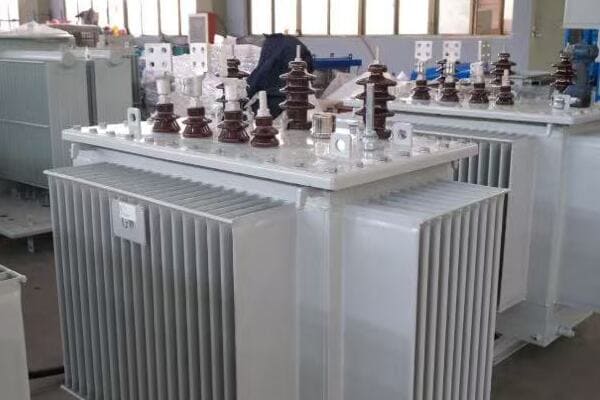
Key Safety Practices for Transformer Maintenance
Let’s explore the essential safety steps and considerations:
- Lockout/Tagout (LOTO) Procedures
- Personal Protective Equipment (PPE)
- De-energization and Grounding
- Confined Space Entry Procedures
- Emergency Response Planning
Lockout/Tagout (LOTO) Procedures
Ensuring electrical isolation:
- Proper identification of all energy sources
- Application of locks and tags to prevent accidental energization
- Verification of successful isolation before work begins
I recently conducted a safety audit where we identified gaps in LOTO procedures during transformer maintenance. By implementing a more rigorous checklist and verification process, we significantly enhanced worker safety and prevented several near-miss incidents.
Personal Protective Equipment (PPE)
Essential protective gear:
- Insulating gloves rated for appropriate voltage
- Arc-flash rated face shields and clothing
- Safety glasses and hard hats
- Appropriate footwear for electrical work
De-energization and Grounding
Confirming safe working conditions:
- Use of properly rated voltage detectors to verify de-energization
- Application of temporary grounding devices
- Adherence to waiting periods for discharge of stored energy
Here’s a quick checklist for de-energization and grounding:
| Step | Action | Verification |
|---|---|---|
| 1 | Open all switches and circuit breakers | Visual confirmation |
| 2 | Lock and tag all open devices | Check lock security |
| 3 | Test for voltage presence | Use calibrated voltage detector |
| 4 | Apply temporary grounds | Verify proper connection |
Confined Space Entry Procedures
Ensuring safety in restricted spaces:
- Atmospheric testing before entry
- Use of appropriate ventilation equipment
- Continuous monitoring during work
- Presence of a trained standby person
Emergency Response Planning
Preparing for potential incidents:
- Development of clear emergency procedures
- Regular drills and training for emergency scenarios
- Availability of appropriate first aid and rescue equipment
- Clear communication protocols for emergencies
In my experience, rigorous adherence to safety procedures is non-negotiable in transformer maintenance. I recall an incident where a maintenance team was about to begin work on a transformer that they believed was fully de-energized. Thanks to our strict policy of always performing a final voltage check, we discovered that one of the incoming feeds had been inadvertently left connected. This last-minute catch prevented what could have been a fatal accident.
FAQs: Transformer Maintenance Procedures
To address some common questions about transformer maintenance:
-
What is the standard maintenance interval for a distribution transformer?
Standard maintenance intervals can vary, but typically include monthly visual inspections, quarterly basic checks, and annual comprehensive examinations. However, the exact frequency may depend on the transformer’s criticality, operating environment, and load profile. -
What tests are performed on transformer oil?
Common transformer oil tests include:- Dielectric Breakdown Voltage (BDV) test
- Moisture content analysis
- Acidity test
- Dissolved Gas Analysis (DGA)
- Interfacial tension test
- Power factor test
-
How do you perform a visual inspection on a transformer?
A visual inspection typically includes checking for:- Oil leaks
- Damage to bushings or insulators
- Corrosion or damage to the tank
- Proper oil levels in gauges
- Condition of radiators and cooling fans
- Signs of overheating or discoloration
- Integrity of seals and gaskets
- Proper operation of gauges and indicators
-
What safety gear is required during transformer maintenance?
Essential safety gear typically includes:- Insulating gloves rated for the appropriate voltage
- Arc-flash rated face shield and clothing
- Safety glasses and hard hat
- Insulated tools
- Voltage detector
- Grounding equipment
- Appropriate footwear for electrical work
- Respirator (if working in confined spaces or with certain chemicals)
-
How often should transformer oil be tested?
Oil testing frequency can vary based on the transformer’s importance and operating conditions. Generally:- Basic tests (e.g., dielectric strength): Annually or semi-annually
- Dissolved Gas Analysis (DGA): Annually for most transformers, quarterly for critical units
- Comprehensive oil analysis: Annually or based on the results of basic tests
Remember, these are general guidelines. Always consult manufacturer recommendations and industry standards for specific requirements related to your transformer maintenance practices.
Conclusion
Effective transformer maintenance is crucial for ensuring the reliability, efficiency, and longevity of power distribution systems. By implementing a comprehensive maintenance program that includes regular visual inspections, electrical testing, oil sampling, and adherence to strict safety procedures, you can significantly reduce the risk of unexpected failures and extend the life of your transformer assets. Remember, consistent and thorough maintenance is not just about preventing problems – it’s about optimizing performance, ensuring safety, and protecting your investment in critical power infrastructure.
Thank you for joining me in this exploration of transformer maintenance practices. Stay safe, stay informed, and let’s keep pushing the boundaries of what’s possible in power distribution and electrical engineering.
Free CHBEB Transformer Catalog Download
Get the full range of CHBEB transformers in one catalog.
Includes oil-immersed, dry-type, pad-mounted, and custom solutions.
Quick Message
Request A free quote
We'd like to work with you
- +86 15558785111
- chbebgroup@chbebpower.com
- +86 15558785111
What We Do
CHINA BEI ER BIAN (CHBEB) GROUP, with 218 million in registered capital, originated from Beijing Beierbian Transformer Group. Headquartered in Beijing for R&D, it operates major production bases in Nanjing and Yueqing, producing high-quality products.
Latest Product
address
BeiJing
No 3,RongJing East Road,BeiJing Economic Technological Development Area,BeiJing,China
JiangSu
No 7️Xiangfeng Road,Jiangning,NanJing,JiangSu,China
WenZhou
No.211, Wei 16 Road, Industrial Zone, Yueqing, Wenzhou, Zhejiang, China.
XiangYang Industrial Zone ,YueQing,WenZhou,ZheJiang,China
contact us
- chbebgroup@chbebpower.com
- +86 13057780111
- +86 13057780111
- +86 15558785111
Copyright © Bei Er Bian Group


